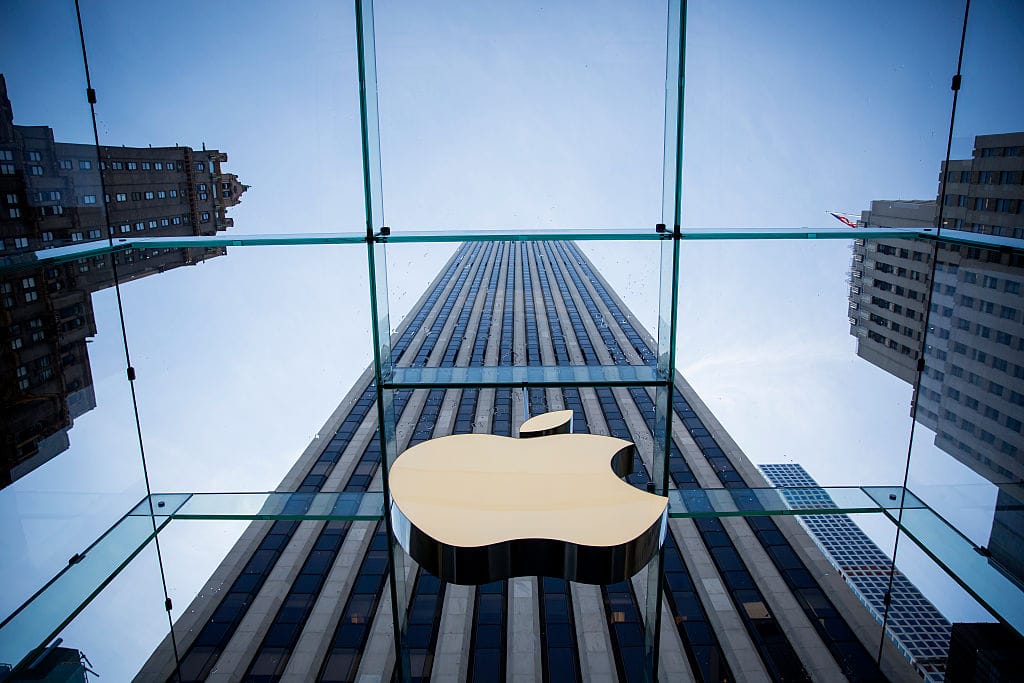
Mae Losasso takes a look at the humble apple – at a time before apple meant Apple. From the Ancient Greeks to the Garden of Eden, from Isaac Newton to The Beatles, Lossaso explores the historical significance and symbolism of the commonplace fruit.

At the start of this year, it was announced that Apple had become the first company to hit $3 trillion market value. They have the pandemic to thank for that: with everybody locked down – taking selfies, stalking each other on the gram, losing hours on Candy Crush, TikTok, and Google Maps to see all the places they couldn’t visit – tech stocks surged. Now Apple are worth $3trn. At least someone had a good time in 2020 and 2021.
ArrayMcIntosh
Ah, Apple. Who remembers those clunky, grey macs of the 90s, Apple’s hinterland years? Back in the day, when computer programmers were strange, niche creatures, Macs were strictly for those in the know – the rest of us idiots were firing up Windows 98 to dabble with MS Paint and play Minesweeper. Innocent times. Those little colourful Macs (short for Macintosh, which, by the way, is also the name of Canadian cultivar, the McIntosh apple), were the beginning of the shift; then those lovely, shell-like iBooks; then that delicious iMac, it’s flat screen suspended above it’s white domed body by a floating metal arm. And then the iPod came out and everything – everything – changed. And now Apple are worth $3trn.
But who remembers when the word ‘apple’ didn’t mean tech, didn’t mean Silicon Valley, didn’t mean ‘i’-anything or Macintosh or Steve Jobs or turtleneck sweaters? I don’t, but someone probably does. Of course, we’re all still familiar with the original apple – we all still eat them, drink them, see them on trees – but the fruit has merged, perhaps forever, with the digital brand. As Apple rests on its record-breaking $3trn laurels, it’s hard to hear the word now and not think of the tech empire.
Jobs (and Wozniak, let’s not forget him) may have transformed the apple into something flash and gadgety, but they weren’t the first to employ the apple as a symbol. In fact, the humble little fruit has been one of the richest icons in human history. From the Ancient Greeks to the Garden of Eden, from Isaac Newton to The Beatles, turns out we’ve always had a thing for apples. Question is: why?

Golden Delicious
Most of us in the English speaking world probably think that the first really significant apple is the one that Eve yanked off a special tree in a pretty garden and took an ill-advised bite from. Yes, that’s right, I’m talking about Original Sin, the Garden of Eden, and our subsequent condemnation to the crummy reality of the world. Even if we’re not religious – even if we don’t subscribe to the theory that God created the world in 6 days and that snakes can talk – many of us will have some dim, half-formed thought about an apple at the root of everything.
Which is odd, because, in the Old Testament, there is absolutely no indication that the ‘forbidden fruit’ was an apple. In fact, given that Eden is magical, and the tree of knowledge doesn’t grow anywhere on earth, why did we ever imagine that this life-altering fruit – this fruit that cast us, harshly, out of innocence and into experience – was nothing more than your average Granny Smith?
The answer rests on something of a mistranslation. The Ancient Greek myth of the Garden of Hesperides (roughly contemporaneous with the Old Testament), tells of a tree in the Greek Goddess Hera’s orchard, on which grew dazzling golden apples. Somewhere down the line, the fruit from the myth of Hesperides mingled with the story of Genesis, and the classical Greek term, μήλον (mēlon) – meaning, simply, ‘tree fruit’ – came along with it. When it migrated into Latin, mēlon became mālum, meaning ‘apple’, a word that bears a striking resemblance to the Latin term, mălum, meaning evil. And so, by virtue of this ancient word ladder, the forbidden fruit became none other than – an apple.
So, the apple stuck (quite literally, in Adam’s throat – hence the term Adam’s apple) as a symbol of sin, sex, and sensuality. Only, it wasn’t quite so straightforward. Because, as late as the 17th century, the word ‘apple’ in English was used – just like the word mēlon in classical Greek – as a generic term for all fruit and nuts (but not berries – they drew the line at berries). When tomatoes were first introduced into Europe they were known as ‘love apples’; in Old English, cucumbers were known as ‘earth-apples’, a term that’s still used to describe potatoes in French, Dutch, Hebrew, Afrikaans, Persian and Swiss German. In some languages, even oranges are known as “golden apples” or “Chinese apples”. How, amongst so many apples, did we ever agree on one?

Flower of Kent
Skip forward a few, oh, thousand years after the Old Testament and into the late 17th century, when the next really significant encounter with an apple (the term, by now, had finally been standardised) was Isaac Newton’s head. So the story goes, the scientist was sitting under a tree in his garden when an apple (a Flower of Kent apple, to be precise) plopped onto his crown and – voila! – gravity was born.
Newton’s theory was part of the great wave of enlightenment thinking that would wash away folkloric ideas of myth and magic that had prevailed for centuries. Before Newton, old wives had been telling tales about apples: peel the skin in one long piece, they would say, to divine the initial of your true love’s name; chop your apple up at midnight, they would say, and eat it in front of the mirror, where your true love’s face will appear; for happiness in your relationship, they would say, cut an apple in half and share it with your lover. Before Newton, witches and Wiccans would religiously follow these, and other, divination rituals. Before Newton, mages like Merlin used to wander around wearing a silver bough from an apple tree so that they could cross over into other realms. Before Newton, even Unicorns were said to have enjoyed eating apples. Thanks Newton.
The story of Newton and the falling apple may be apocryphal, but whether true or not, one thing is for sure: it stuck (apples, it seems, have a habit of sticking). As with the forbidden fruit – and all of the imagery evoked by that first bite – we were captivated by the idea of the apple landing on Newton’s head; captivated by its simplicity, its universality, its relatability. Just as we could all have picked an apple from a tree and bitten it like Eve, so, too, could we all have sat in the shade of an apple tree and felt the fruit falling on our heads. And it’s this – this commonality – that brings us back to Jobs and Wozinack’s immemorial branding decision.

Granny Smith
Almost a decade before Jobs and Wozinack set up in that California garage and got down to work on their first computer, a band in Britain was launching a new record label: the band was The Beatles; and the label, of course, was Apple Corps, on which they would release some of their most important albums, including The Beatles (AKA the White Album), Abbey Road, and Let It Be. Anyone who owns any Beatles vinyl will know how delicious the Apple Corps branding is: play side 1 and you’ll see the green outside of a juicy Granny Smith; turn it over to side 2, and you’ve got the crisp, white flesh of a perfectly sliced apple.
Many people know that Apple – the tech conglomerate – hit upon its name as a reference to Newton (their original logo actually depicted Newton sitting beneath the Apple tree). But few know that in the run up to the launch of the Mac in the 1980s, Jobs told his designers that he wanted the branding for the new computer “to look and feel like The Beatles.” (Jobs should probably have steered clear of The Beatles, given that he’d already nicked their company name. In fact, Apple Corps sued Apple for trademark infringement. The final settlement wasn’t agreed until 2012.)
The familiar Apple logo – the little silhouette with a bite taken out of it – was designed by Rob Janoff in 1977. The bite has become one of the most discussed features of the little logo: some say it distinguishes the image from a cherry; others read it as an allegory of Original Sin, the thirst for knowledge, and the release from ignorance; Janoff’s creative director suggests that the bite is a visual pun on the byte; while Janoff himself claims that the logo captures the common, cross-cultural experience of biting into an apple.

It’s true – the biting of an apple really is one of the most cross-cultural experiences one could imagine. Abundant in almost every corner of the globe, apples have been part of human culture for millennia. From myth to medicine, from art to cuisine to technology, apples are one of the most enduring symbols the world has ever known. I only hope that in our unquenchable thirst for knowledge – our desperate scramble out of ignorance – we don’t lose sight of innocence too; the organic innocence of an orchard fruit, before big tech gripped the world.


